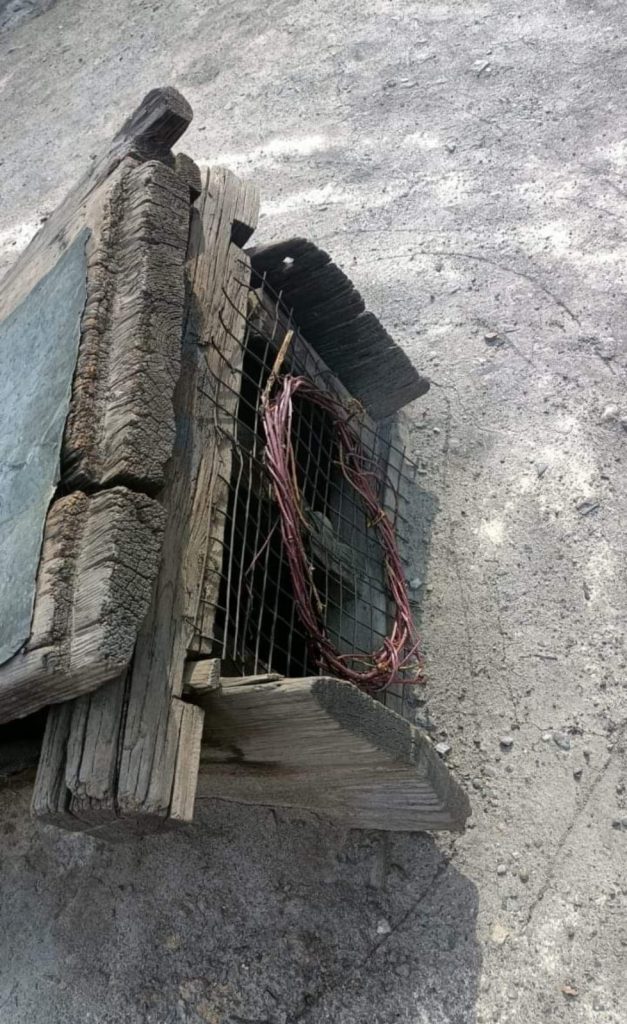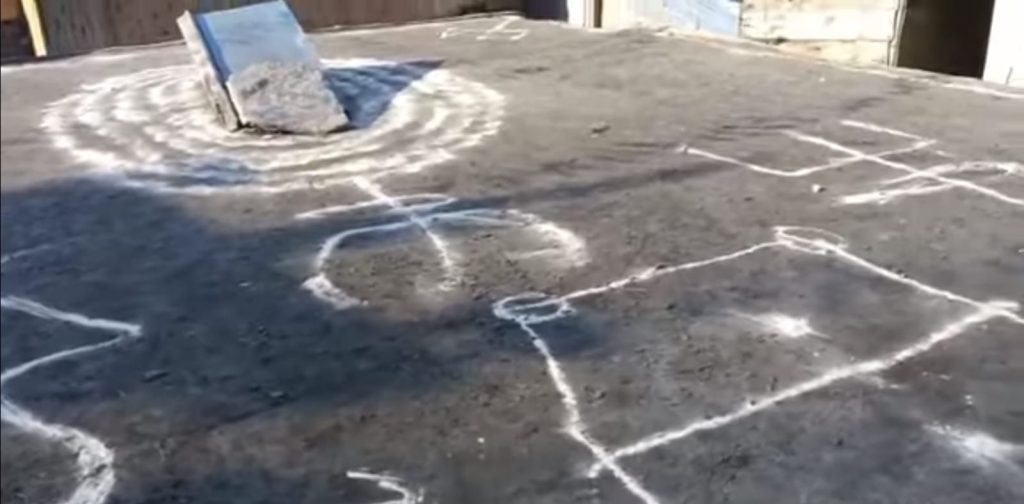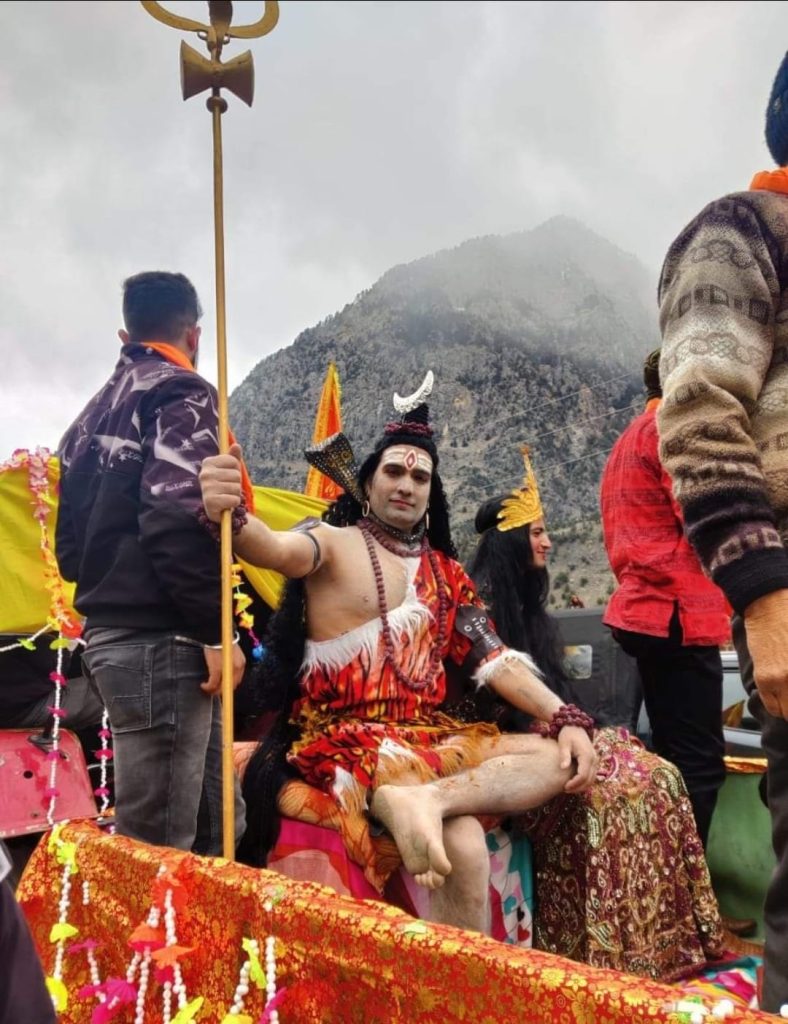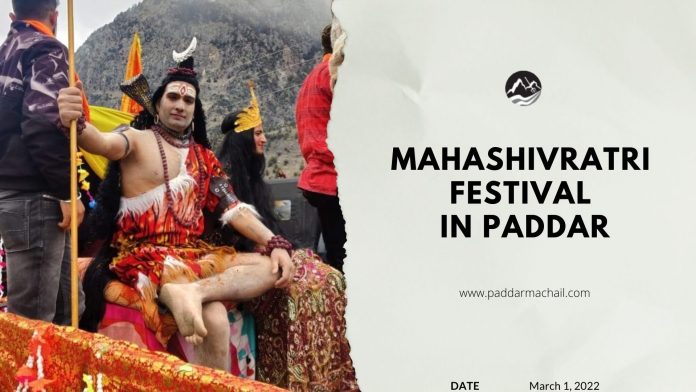Mahashivratri is a popular festival in India. It is celebrated with great zest and enthusiasm all across the country. In the Himalayas, it is celebrated in its unique ways. Paddar which is situated in the lap of the Himalayas celebrates this festival with its unique set of practices and rituals.
As per the traditional story, this festival signifies the occasion of the marriage of Lord Shiva with the Goddess of power, Shakti. Since Mahashivratri marks the union of Lord Shiva and Maa Shakti therefore it has a great connection to the dance of life ( Shakti) happening in the fabric of nothingness (Shiva).
According to another legend, it is the day when Lord Shiva revealed to this world its Viraat Roopa after drinking the poison which gushed out after the Sagar Manthan (churn of the ocean).
Shiv Ràtri is celebrated in the entire Paddar region with almost similar rituals. In most of the parts of Paddar Shiv Ràtri is a four nights festival.
1. Kanda/Chitto rakhi (H: रेखा)
2. Rakhi (रीऐखी)
3.Narth Shiv Ràtri (उग्गर शिव रात्रि)
4. Barth (fast)(पुन्न वरत)
1. Kanda/Chitto Rakhi: The first day of the four days of Shiv Ràtri goes in the preparation of some practices and is called Kanda in Paddar. On this day people of Paddar visit jungles and fetch some thorny plants which are believed to have some miraculous properties or say which repel negative energies. It is believed that evil forces stay at their zenith for three days before the commencement of the Shivratri festival. We at Paddar, therefore, put these thorny plants at the outlets of our residences viz doors, Tabari(outlets at the rooftops), etc.

In Gandhari Kanda is celebrated as Chitto Reakh having its direct relevance with Singhasan Mata seated at village Chitto. Here every household sends their member to collect stone pebbles from the riverbank, in good stock mostly of white color. White pebbles are segregated and are grounded to get fakroz (white stone powder) and some of these stones are kept intact to perform other sacred rituals on the following days.
2.Raekhi: This is the kind of fortification done in Paddar with the fakroz lines. At sunset, the stone powder is employed to draw lines (rekhas) where we draw certain peculiar shapes like a trident, sickles, etc. at every such place from where supposedly some evil creature or forces can step in such as doors or trespasses like tubari (a space on the rooftop which performs the dual function as smoke vent and roshandaan).
And all other spaces such as windows etc. are also fortified with the installation of Iron tools like axes, swords, knives, scissors, and other sharp tools used in the household chores, etc. This fortification is done to protect the homes from the evil forces which they tend to trespass.

In Chitto Paddar Kanda and Raekh rituals are performed on the same day. In other words, we can say that the Shivratri festival is celebrated in Chitto Paddar only for three days.
3. Narth Shiv Ràtri: It is the main day of Shiv Ràtri and is celebrated in all parts of Paddar. However, in some corners of Paddar like Gandhari, this day is called Uggar Shivratri. It is believed that a devil called Tunda rakash in local dialect tries to impede the positive cosmic power of Shiva. Stone pebbles collected earlier are thrown intermittently all through the night towards those directions which open to the living area be it a ground surface like doors or aerial vents viz. windows, tubari-roshandaans. The tradition behind throwing these stones pebble may be described in two probable ways:-
-
Shiv Ratri is the festival dedicated to Mahadev Shiv and every creature whether good or evil supposed to accompany him. To keep evil forces(Tunda rakash in common parlance) or creatures away from the home these stones are thrown. This stone-throwing ritual has a very frightening image in our heads of our childhood times. Stone pebbles are thrown with immense force which when hit the hard surface such as wall and wooden structure and other stuff produce huge crinkling noise on impact which cause a shiver down the spine. This festival was more of being staying alert and awakened than of joys, merriness, and celebrations. However, as of now except for a few households, most people have abandoned this practice of stone-throwing.
-
It is said that everyone needs to be vigilant during shiv ràtri(nights) for evil forces are strong during these nights. The beddings are not set because no one should sleep as same are prohibited in the tradition. To keep everyone awake and make everyone experience the divine cosmic energy of Lord Shiva this practice of stone-throwing might have brought to the tradition.
4. Barth ( Fast): On the fourth day fast is observed in the length and breadth of Paddar. It is a kind of gesture to express devotion for the mighty God Lord Shiva. People wake up early in the morning and avoid taking food on this occasion although some dishes are eaten like bajarbhang, bhabhri, dry fruits, and other fruits. Myriad rituals are performed in the different corners of Paddar on this day. In Ungaie Paddar one peculiar practice is prevalent where one shaman (chela) also called Thathir ( ardent devotee of Maa Chandi) sits in a state of trance just behind the house hearth and prophesizes the occurrence of events of the time in the vicinity with accuracy. This deepens the faith of locals in the power of shamans. It is supposed that this practice is prevalent in all the villages where Maa Chandi is the prime deity. On the other hand, this practice is not followed in Chitto Paddar which is an abode of Singhasan Mata. It is believed that Maa Singhasan does not like jagrata (night awakening) these days.

5. The Fifth day is marked as the conclusion of the festival of Maha Shiv Ràtri. It is called Duyaay in Paddar. From this day onwards celebrations of all the festivals in the Paddar region begin in the morning for the next 6 months till Aalona Dhaunas which falls in the month of Bhadoo (September-October).
Mahashivratri which translates to the Great night of Lord Shiva is of great significance in Paddar. People do not use needles and other implements (these implements were used by the common folk to remove impurities from the sheep wool in the past) these days which are used for knitting clothes.
People soak themselves completely in the devotion of Lord Shiva and feel new vigor and energy flowing through their veins for the rest of the year. Although these practices and rituals are at the risk of getting extinct nowadays as youngsters are getting indifferent towards these and showing little interest in performing them. These rituals hold the secret of the cosmos which they often tend to ignore through their ignorance.
We hope one-day blessings will come and guide us all Indians to learn from these forgotten and about to be abandoned but powerful rituals.
May Lord Shiva protect our culture!



